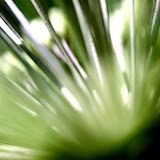Today were going to take a look at small plant
known as the Dionaea muscipula, or Venus flytrap. This little guy
is perhaps one of the most amazing plant creations on earth. As it’s name
suggests, it is able to trap and digest many various insects.
But that’s not all. It also has the ability to trap
and digest small frogs. (Did I mention this was a plant?)
Looking at the anatomy of this cute little guy, we
see that the Dionaea was miraculously formed with brightly colored
pigment on the inside of both its leaves, which contain small glands that
secrete a sweet smelling nectar. Both of these minute details are incredibly
effective at attracting insects.
As well as an occasional frog.
To explain the whole process of how this little
leafy guy traps and digests his prey, I’ve copied part of an article from the
International Carnivorous Plant Society and posted it below.
"I: Initial Snap
This is the very fast, snapping closure that
catches bugs in such an exciting way. It takes less than a second.
II: Tightening Phase
This is the phase in which the leaves slowly
tighten against each other making a cage from which bugs cannot escape. This
takes about 30 minutes. Many of the traps in the photo to the right, captioned
"Phase II", have finished this phase.
III: Sealing Phase
This is the stage in which the seal is completed.
The marginal spines are pulled away from each other, so they are no longer
crossing each other.
All the phases of Dionaea leaf closure are
caused by changes in the curvature of the leaf surface. These changes in
curvature are achieved by differences in the size of the leaf on the inner
surface vs the outer surface. The plant tissues on the opposing leaf surfaces
change in relative size. There are three main mechanisms for this: acid growth,
growth by cell division, and leaf turgor.
Acid growth is a phenomenon
in which the release of acidic compounds in the leaf tissues result in the
loosening of some of the fibers in cell walls. Because of this loosening, the
cells are free to expand. This is acid growth. The enlarging (growing) cells
make one side of the leaf bigger than the other side, and the leaf flexes away
from the side experiencing the acid growth. Acid growth is responsible for
phase I leaf closure that I described above.
Turgor pressure leaf
movement is an osmotic effect, in which an ion (in the case of Dionaea,
K+) released into the leaf tissues makes the cells on
one surface of the leaves wilt. This makes the wilting surface slightly smaller
than the unwilted, opposing leaf surface. The leaf curls towards the wilted
side. Turgor pressure effects are apparently at least partly responsible for
phases II and III that I described above.
Growth by cell division is
another way of increasing the amount of tissue in parts of a leaf or tentacle.
It is a relatively slow phenomenon, so does not contribute to particularly
rapid leaf motion. It may have a role in Dionaea leaf actions in phases
II and III".
Wow. Quite the process. In fact it's such a
process, that scientists still don't fully understand how this little plant
works.
Which causes me to leave you with a small
challenge. Think of what the probability is of this complex creation being
accidentally thrown together as the result of a massive explosion.
The answer is simple- It's not possible! It had
to be created by an unbelievable God.
Now try and wrap your mind around this: Compared to God, just how frail
is mankind if our brightest scientists can't even fully comprehend the function
of one small leaf?

